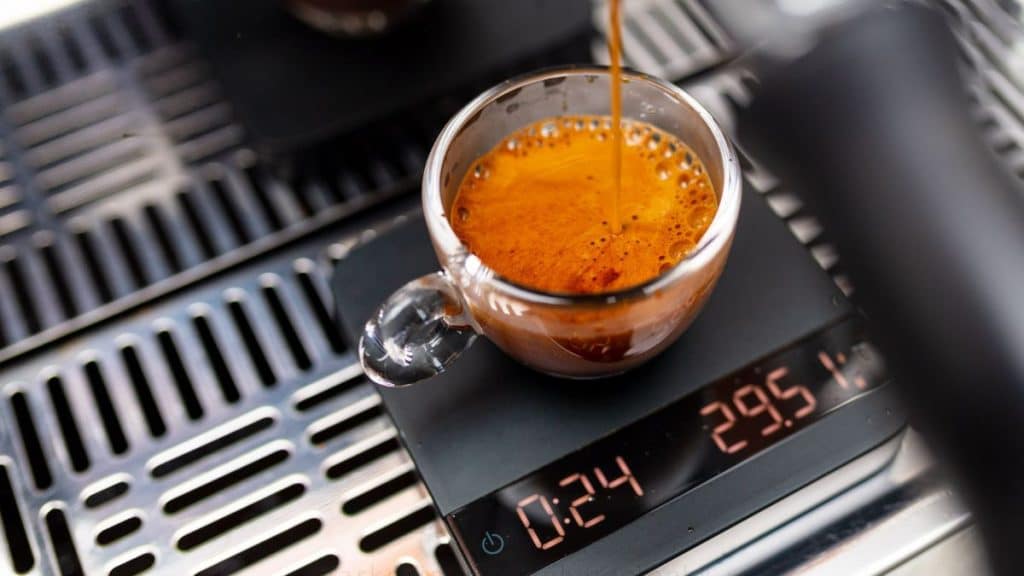Expresso is a science and art and in the middle of this craft is the dialing in your grind. Whether you are a barista in a busy cafe or even a home cafe enthusiast, there is so much that you can discover about your grind by learning this simple task of adjusting your grind, and the difference between a flat and a bitter shot and one that pops! with balanced sweetness and complexity. Lots of coffee lovers are familiar with the idea that even the freshest beans of a well-trusted roaster may be troublesome in terms of their flavor when they have not been ground properly given the right grind setting. This is why it is crucial to master this aspect of brewing to become a person willing to develop good espresso.
Understanding the Grind Size
The speed or slow of the water passing through the coffee puck is a direct control of the size of the grind you use. A finer grind retards extraction with the result of more often richer flavors and heavier body but it may bring out bitterness when over faulted. The finer the grind, the slower the flow and often the lighter-bodied the shot and may be sour or just not fully developed. Dialing in is simply finding the right balance point when the acidity, sweetness, and bitterness are in harmony with each other.
This process is rarely static. Beans grow old, the humidity may vary and even a replacement of a fresh pack of the same coffee may necessitate some minor manipulation. The thing is that you are tasting your espresso and you are actually tasting the product of all of these variables. Keeping an eye on your grind setting, dose and yield will provide you with a good means of adding consistency and control to your routine.
Adjusting for Flavor Balance
Start by tasting your shot critically. X In case your espresso is too bitter, harsh, or dry, you have a problem with over-extraction: your grind is too fine. Then put in a coarser setting, and see what happens. On the other hand, when the shot is bitter or watery or tasting as well as feeling weak, then your grind is coarse. Screw it tighter to a finer position to decelerate the extraction process and produce sweeter and more body.
Each grinder acts slightly differently and each change of setting can be sensibly different. A little change in dial position can change the extraction time by a few seconds. That is why serious baristas suggest making small and gradual changes and not big steps. Making careful notes of your grind settings and shot times, tasting notes can guide the improvement of your technique over a long period of time.
Considering Bean Variety and Freshness
Not all coffees behave the same way under pressure. Darker roasts tend to use a coarse grind since they are more soluble, and lighter roasts a little finer grind to bring out sufficient flavor. The specialty coffee roasters often provide beans with different flavor intensity and each of them might require grinding adjustment. Fresh coffee is also important: once aged, beans emit carbon dioxide and give up some of their bright flavors requiring more finely ground beans in order to make up for a deficiency in solubility.
When you purchase coffee supplies as bulk orders such as with wholesale coffee suppliers, remember that it should not be stored carelessly because it will cause the materials to go stale. Split your beans into small airtight containers and put them in a cool and dark location. One of the easiest but best things you can do in order to achieve a better tasting cup is to grind only as much as you are going to be brewing.
Practicing Consistency and Patience
Dialing in isn’t something you master once and forget. Even long-time baristas re-learn the procedure every day to make their espresso taste the most delicious. Practice will teach you that you should have a sensory memory of what your espresso should be like and how it should look, and patience will teach you to respect the slight differences that could enable you to make massive improvements.
Finally, dialing in also means that you are in a relationship with coffee. Learning to adjust your grind gives you power over a very complicated process and lets you get the best out of each bean. This is easy to overlook and just have a mediocre espresso but it is the details that makes the difference between a good espresso and a downright special one, to which such respect can be accredited as a testament to the world of specialty coffee.
